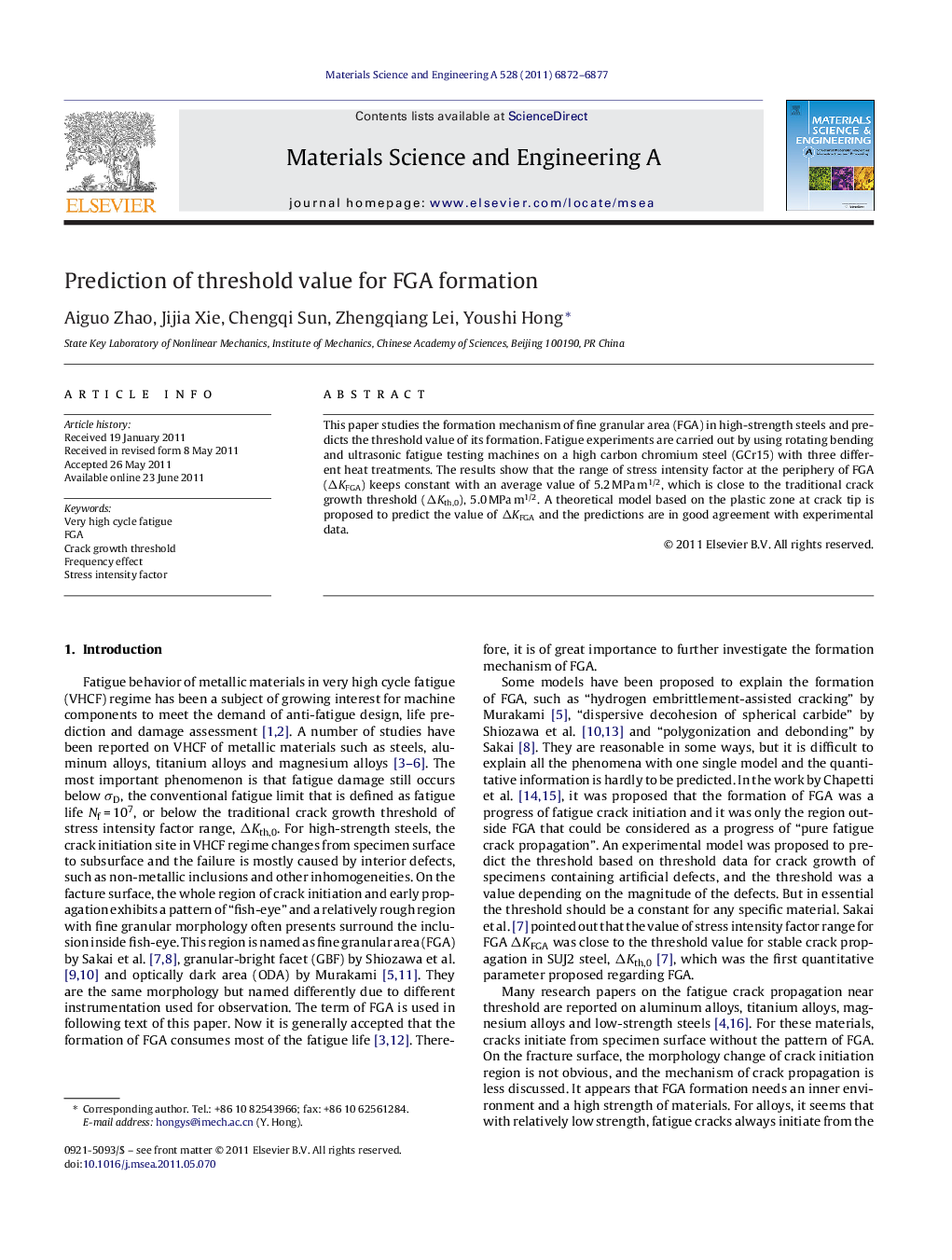| Article ID | Journal | Published Year | Pages | File Type |
|---|---|---|---|---|
| 1578366 | Materials Science and Engineering: A | 2011 | 6 Pages |
This paper studies the formation mechanism of fine granular area (FGA) in high-strength steels and predicts the threshold value of its formation. Fatigue experiments are carried out by using rotating bending and ultrasonic fatigue testing machines on a high carbon chromium steel (GCr15) with three different heat treatments. The results show that the range of stress intensity factor at the periphery of FGA (ΔKFGA) keeps constant with an average value of 5.2 MPa m1/2, which is close to the traditional crack growth threshold (ΔKth,0), 5.0 MPa m1/2. A theoretical model based on the plastic zone at crack tip is proposed to predict the value of ΔKFGA and the predictions are in good agreement with experimental data.
► The mechanism and threshold of FGA formation in high-strength steels is studied. ► The value of ΔKFGA of different materials keeps constant and is close to ΔKth,0. ► Crack initiation progress in FGA corresponds to the crack propagation below ΔKth,0. ► A theoretical model depending only on Burgers vector and shear modulus is proposed. ► The predictions by the model are in good agreement with many metallic materials.
